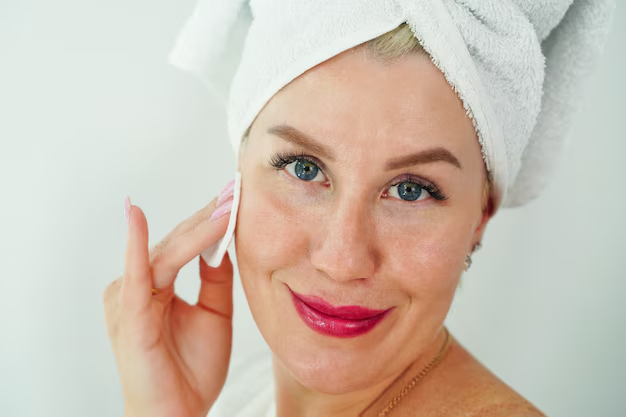Uncovering the Role of Ivermectin in Managing Rosacea
Rosacea, a common yet often misunderstood skin condition, can affect not only an individual's appearance but also their self-confidence and quality of life. If you're among the millions grappling with rosacea, you might have come across ivermectin as a potential solution. But how does this treatment actually work? Let's delve into the world of ivermectin, exploring its uses, benefits, and some lesser-known aspects related to rosacea management.
What is Rosacea?
Rosacea is a chronic inflammatory skin condition that primarily affects the face. It manifests through persistent redness, visible blood vessels, and sometimes, acne-like bumps. While the cause of rosacea is still not fully understood, it is thought to result from a combination of genetic and environmental factors.
Key Symptoms:
- Facial Redness: Often the first sign, causing a flushed appearance.
- Visible Blood Vessels: Small blood vessels become enlarged and visible.
- Bumps and Pimples: These can sometimes resemble acne.
- Eye Irritation: Some individuals experience ocular rosacea, leading to red and irritated eyes.
How Ivermectin Fits In
Ivermectin is a well-known antiparasitic medication that has been repurposed for various dermatological uses, including rosacea. Its effectiveness in managing rosacea symptoms, especially the inflammatory components, has garnered attention.
Understanding Ivermectin
Primarily known for its use in veterinary medicine and certain parasitic infections in humans, ivermectin functions by binding to invertebrate muscle and nerve cells, causing paralysis or death of the parasite. Interestingly, its anti-inflammatory properties made it a candidate for managing skin conditions.
Why Ivermectin for Rosacea?
Ivermectin targets Demodex mites, microscopic mites that live near hair follicles. While they’re common on human skin, people with rosacea tend to have a higher density of these mites. Here’s why ivermectin stands out:
- Anti-inflammatory Actions: It reduces inflammation, thereby alleviating redness and bumps.
- Mite Reduction: By decreasing Demodex mite populations, it addresses one potential trigger of rosacea flares.
- Long-lasting Effects: Many users report extended relief from symptoms even after stopping treatment.
Application and Use
Using ivermectin for rosacea typically involves topical formulations, such as creams. The application is straightforward, but, as always, follow the guidance of a healthcare professional to integrate it effectively into your skincare regimen.
- Regular Application: Usually applied once daily to affected areas.
- Proper Cleansing: Ensure skin is clean and dry before application.
- Avoid Eye Area: Keep cream away from the eyes and mucous membranes.
Note: Always consult with a healthcare provider before starting a new treatment.
Complementary Treatments
While ivermectin can be a powerful ally, a comprehensive approach to managing rosacea can enhance outcomes. Consider incorporating the following into your routine:
Skincare Routine
Adopt a gentle skincare routine, avoiding products that irritate the skin. Opt for fragrance-free, non-comedogenic products to minimize flare-ups.
Diet and Lifestyle
Avoid triggers like spicy foods, alcohol, and stress. Staying hydrated and protecting skin from sun exposure can also make a difference.
Medical Treatments
Other options, such as oral and topical antibiotics, azelaic acid, and laser therapy, might be considered based on severity and response.
Navigating Challenges and Setting Expectations
Using ivermectin or any rosacea treatment is a process, often requiring patience and persistence. Initially, symptoms might not show obvious improvement, and it's essential to stay diligent with follow-ups and treatment adherence.
Managing Expectations:
- Duration: Improvements might take several weeks to manifest.
- Consistency: Regular application is key to effectiveness.
- Follow-up Visits: Maintain regular dermatological consultations to assess progress.
Embracing the Journey
While managing rosacea is undeniably challenging, equipped with the right knowledge and strategies, many individuals successfully control their symptoms. Understanding the role of ivermectin, along with a holistic approach, can empower you to make informed choices and take positive steps forward.
Final Takeaways 📝
- Know Your Symptoms: Understand the signs of rosacea for better management.
- Explore Ivermectin's Role: Consider how ivermectin might fit into your treatment plan.
- Adopt a Balanced Routine: Combine treatments with lifestyle changes for optimum results.
- Stay Informed: Regular check-ins with healthcare providers ensure you stay on track.
Quick Summary 📌
- 🔍 What is Rosacea? Chronic skin condition with redness and bumps.
- 🌟 Ivermectin Benefits: Reduces inflammation, targets Demodex mites.
- 🧴 Application Tips: Use as directed, once daily on clean skin.
- 🛡️ Supporting Habits: Gentle skincare, trigger avoidance, diet considerations.
- 👩⚕️ Consult Professionals: Regular medical advice boosts treatment success.
This guide should serve as a stepping stone in your journey through understanding and managing rosacea, offering insights into ivermectin's place in this context. Here’s to finding what works best for you and regaining control over your skin health!
